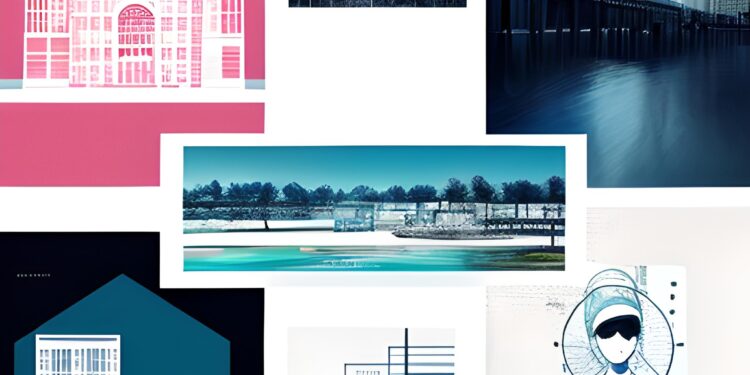No products in the cart.
Do You Have an Aptitude for Design?
Chiranjeet Rege delves into the world of design, shedding light on its growing importance in India, the interdisciplinary nature of design education, and the vast career opportunities it offers.
Do You Have an Aptitude for Design?
In India, approximately 8-10% of students between the ages of 14 and 18 consider pursuing a profession in design. In recent times, ‘Design’ has been one of India’s fastest rising careers. Over the last decade, both students and parents have become increasingly interested in design employment. I believe that a solid educational decision leads to a good job, meaning, the right profession option = interest + personality + aptitude + opportunity.
understanding ‘Design’
People who are inquisitive, creators, and problem solvers can opt for a career in design. Identifying and solving human problems is at the heart of design. The user is at the center of the solution while designing. It’s a huge field that touches practically every part of our lives, including where we live, what we wear, what items we use, what vehicles we drive, what entertainment we watch, and what apps we use, among other things. In all of this, design plays a significant role. Identifying and solving human problems is at the heart of design. It also entails the creation of graphics, visual effects, and moving pictures for communication and entertainment purposes.
Required Aptitude and Interest
 AI
AIAI Revolution: 100,000 Tech Jobs Disappear in 2025
As AI reshapes the workforce, over 100,000 tech jobs have vanished in 2025. This article explores the implications for workers…
Read More →It is a common misconception that being a talented artist is sufficient to pursue a career in design. Another misunderstanding is that design is solely concerned with how things look and feel; but in fact, it is also about how they function. To pursue Design, you must have a fundamental aptitude, meaning a natural ability, and interest (which may be translated as love) for it, just like any other career or profession. Designers must have not just artistic and aesthetic capabilities, but also scientific and logical abilities, because design is ‘Form + Function.’ To identify and solve problems, designers require curiosity, empathy, and problem-solving skills. Before pursuing design as a career, it’s a good idea to take a scientific, design-oriented aptitude test.
To pursue Design, you must have a fundamental aptitude, meaning a natural ability, and interest (which may be translated as love) for it, just like any other career or profession.
Design Education in India
In India, more than 150 government and private design schools have opened in the previous two decades. MIT, Srishti-Manipal, OP Jindal, NMIMS, Somaiya Trust, D.Y. Patil, Atlas, Karnavati, and many more major private educational groups provide design programs at the Bachelors (B.Des) and Masters (M.Des) levels. There were only a few design schools in India at the start of the twenty-first century. Because of the practical aspect of design education, establishing a design school necessitates extensive infrastructure. The fact that both the government and private entities are actively investing in design education infrastructure should give us all hope for the future of design in India.
Interdisciplinary Approach and Career Paths
Design education, unlike many other fields, is interdisciplinary. A designer can work on numerous projects at once, for example, a Product Designer can also work as a Graphic Designer or a UX/UI Designer. Corporates hire designers for strategic and management jobs because design follows a ‘User Centric Approach.’ Design professionals’ careers are future-proofed because of their unique interdisciplinary potential, which allows them to handle the ups and downs of the industry across several disciplines.
Industrial Design, Communication Design, Fashion Design, IT / Tech Design, Architecture, and Fine, Applied Art are among the more than 50 job specialties available in design. UX / UI Design, AR / VR Designer, System Design, Strategic Design Management, Game Design, Technology Product Design, VFX Design, and so on, are some of the fastest-growing, in-demand occupations. Design is still a specialized job field, with limited understanding of the various alternatives and which one is best for a child.
 Career
CareerUC Berkeley fraternity pool drowning under investigation
A tragic incident at UC Berkeley highlights critical career paths in risk management, campus safety, event planning, and student support…
Read More →Design education, unlike many other fields, is interdisciplinary.
Work Opportunities and Pay Scale
Students must complete various projects and internships within their 4-year bachelor’s program or 2.5-year master’s program. These required projects and internships provide them with real-world experience and frequently result in job placements. Top organizations in areas such as technology, consulting, manufacturing, fashion, e-commerce, design studios, advertising agencies, industrial products, consumer products, automobiles, and gaming, among others, hire designers. Not only do design schools train job seekers, but they also train entrepreneurs.
Due to the ‘learning by doing’ nature of their education, design professionals are essentially more ‘industry ready.’ For these design thinking, innovative problem solving, and industry relevant talents, the industry is willing to pay top dollar. At the degree level, fresh designers can expect to earn INR 6-8 lacs per year, and at the post-graduate level, INR 10-12 lacs per year. Engineering graduates and post-graduates earn at least 50% more than these professionals. These greater remunerations help to justify the increased costs of design education. Design school fees might range from INR 3 to 6 lacs per year.
Need for Designers in India
In India, demand for designers significantly outnumbers supply. According to a report, the CII expects that designers will soon account for 1% of all jobs. India barely produces 10,000 designers and 20,000 architects per year, compared to China’s 3,00,000; and even a small country like South Korea produces 25,000 new design professionals each year. There is a clear need to identify students with the necessary aptitude and interest in design and assist them in turning their passion into a meaningful career.
There is a clear need to identify students with the necessary aptitude and interest in design and assist them in turning their passion into a meaningful career.
 AI
AIDaniel McCrea Recognized as AI Education Leader by Xraised
Xraised has selected Daniel McCrea of Adaptemy as an industry leader in AI education, underscoring the growing importance of adaptive…
Read More →The government recognizes the importance of design for global competitiveness, economic growth, product and brand creation, and a higher standard of living, among other things. They have established four new National Institutes of Design, expanded ‘Design’ program to six IITs, and launched crucial projects such as ‘Make in India’ and ‘Smart Cities.’ The ‘India Design Council’ was founded by the Indian government to encourage design education and profession in the country. Students, parents, educational institutions, and industry should all benefit from these initiatives.
To Sum it Up
One should aim to enroll in a top design school if you want to pursue a career in design. Start by assessing your aptitude and interest, and then look into preparation for the examinations with the proper institute. It’s also beneficial to take a course with a firm that may serve as your guide for these tests. For B.Des and M.Des programs, each institute of design has its own entrance exam and admission process. For B.Arch admission, NATA and JEE Paper 2 are required, while MAH-AAC-CET is required for BFA admission. These difficult entrance tests assess students on a variety of skills, including Creativity, Critical Thinking, Communication, Observation, Visualization, Problem Solving, Aesthetic Sensitivity, and Logical Ability.











